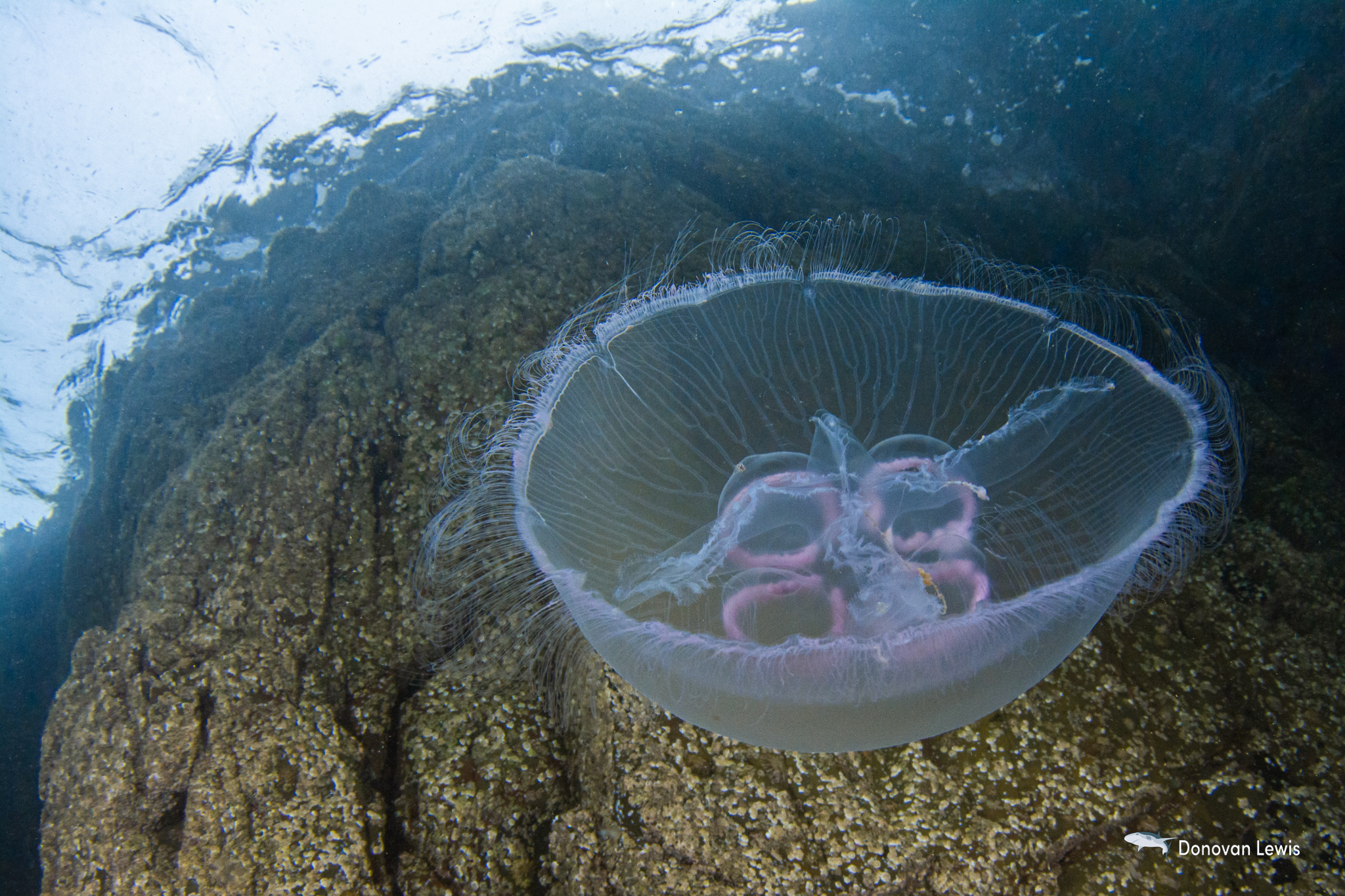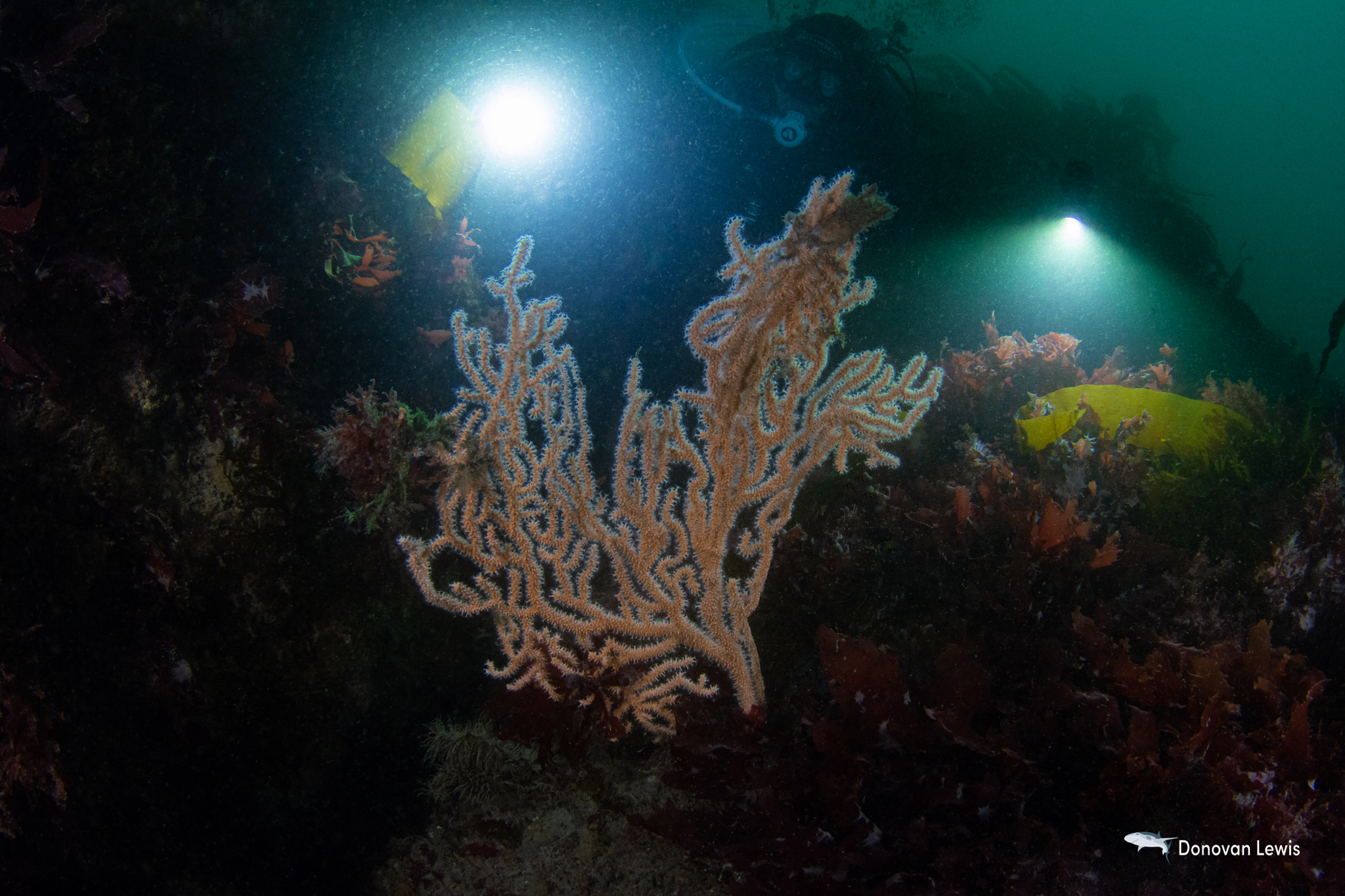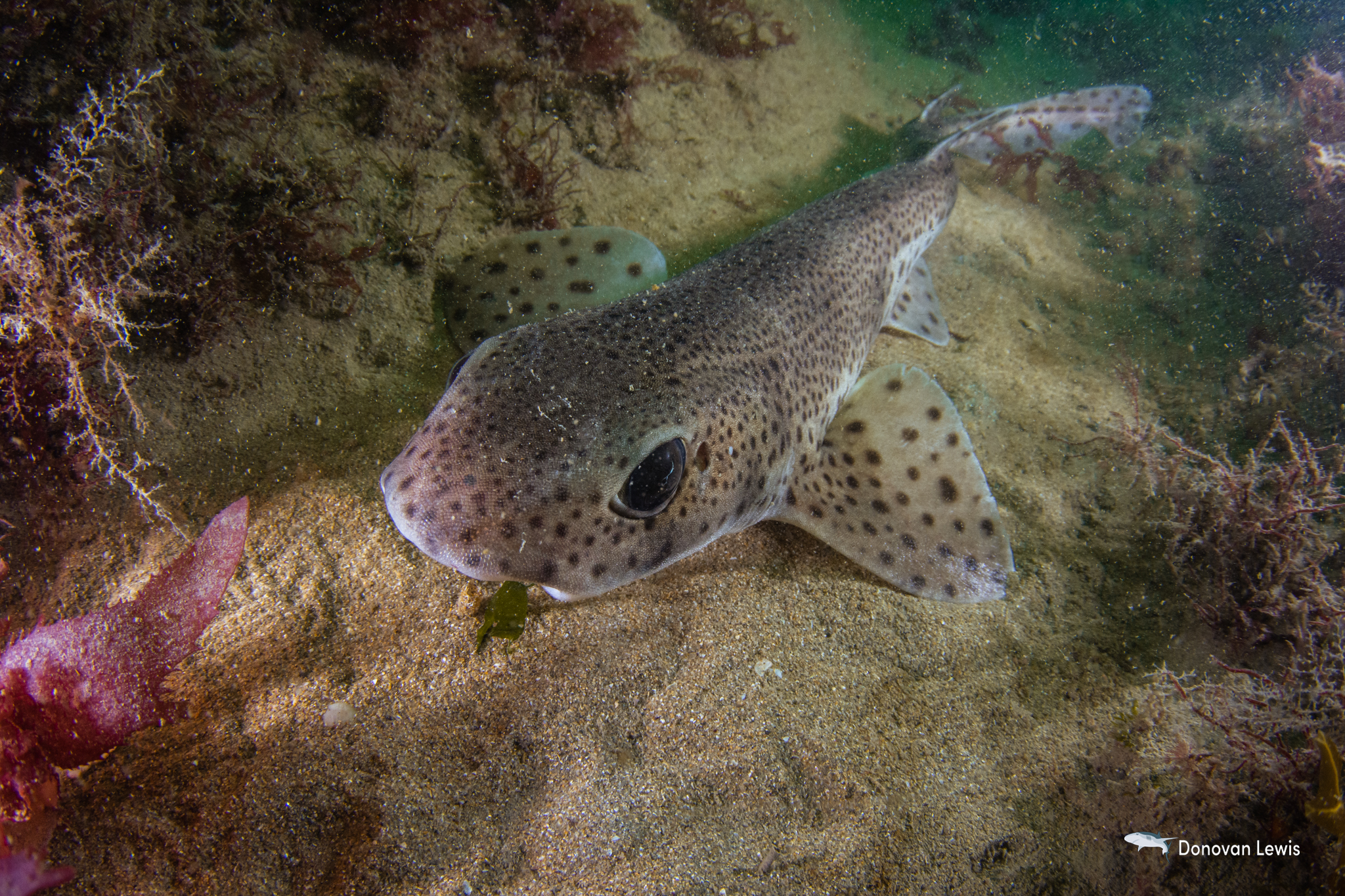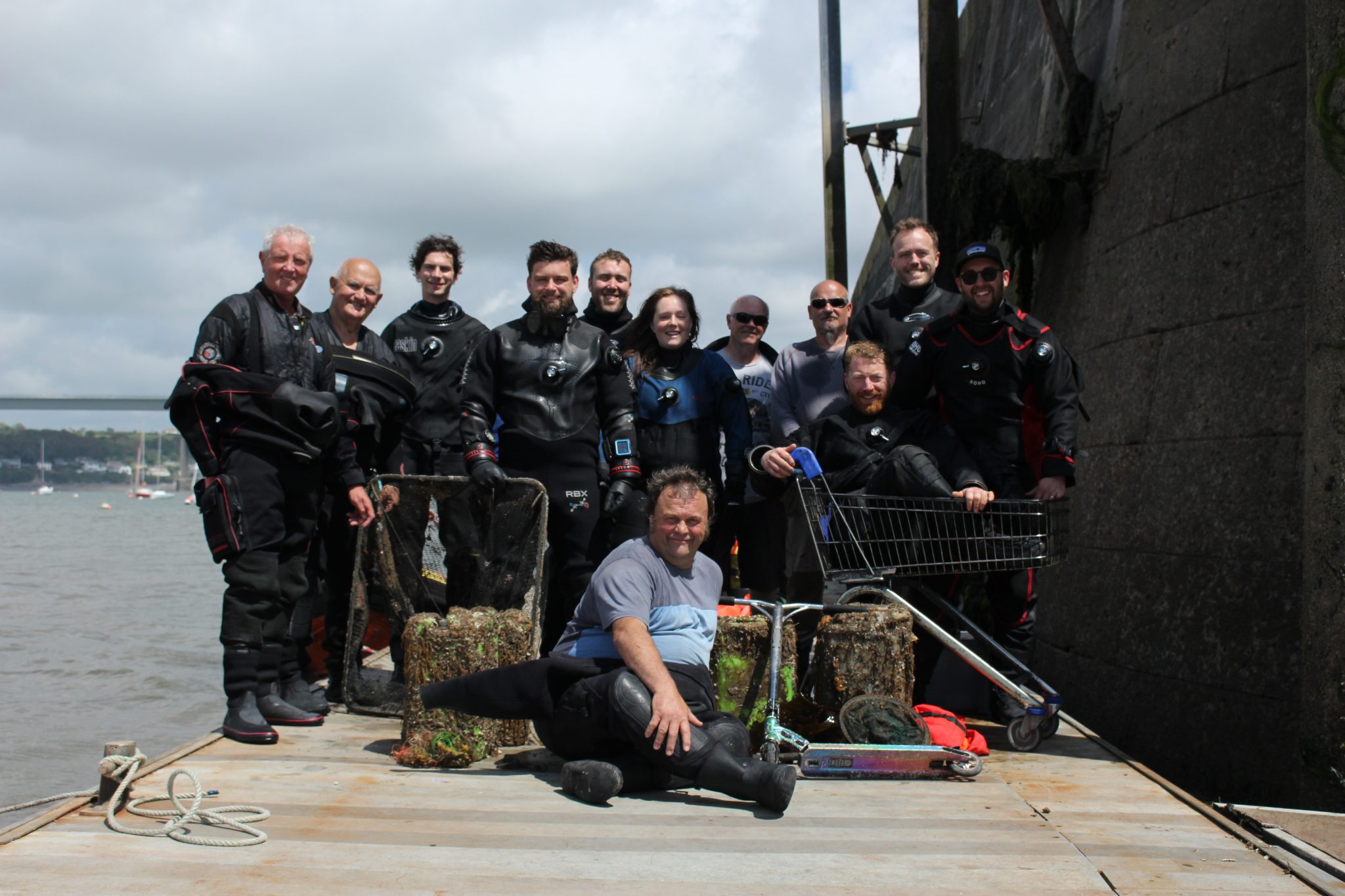News
Western Ecology Tour Expedition Report – Pembrokeshire
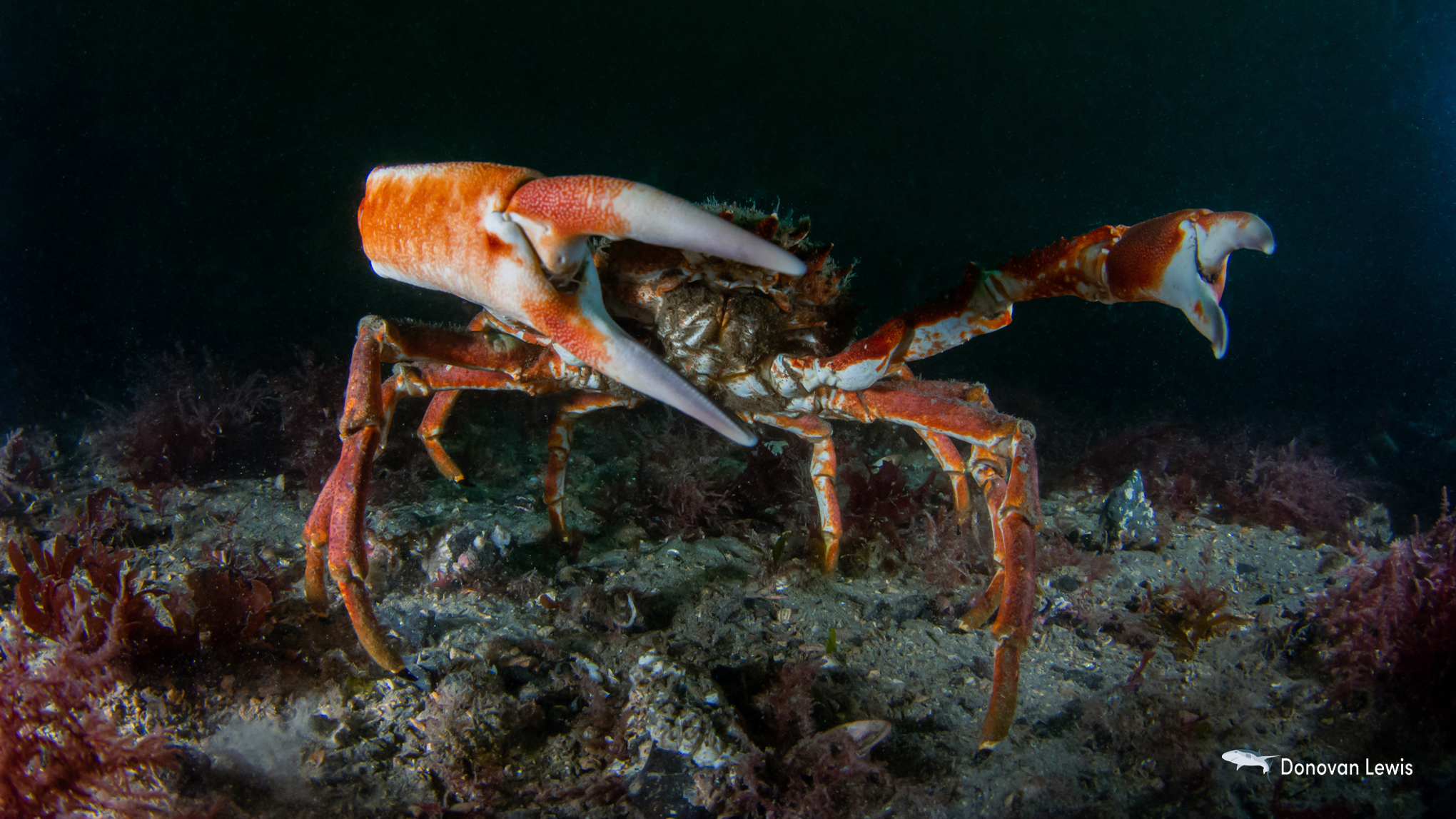
 Whilst the team were in Pembrokeshire, we were supporting Neptune’s Army of Rubbish Cleaners, a charity run by divers who are passionate on keeping their local dive sites clean. They have been running clean ups since 2005 and were the first underwater clean up group. The team and I were guided by Lloyd Jones and David Kennard, who have been running the operation for several years now. NARC work alongside the local community as they help locate pollution and rubbish that needs to be cleared, a lot of these reports come from local fisherman who lose their gear and take a note of the location to tell the team later. NARC use equipment to aid their team and to maximise their efficiency, from cutting equipment, lift bags, and boat crews to help them in removing as much rubbish as possible. NARC also take a great stance on education and take the time to not only carry out these clean ups but to also educate the local community and public on the importance of clearing debris off our beaches and to pick up any trash you may see whilst diving.
Whilst the team were in Pembrokeshire, we were supporting Neptune’s Army of Rubbish Cleaners, a charity run by divers who are passionate on keeping their local dive sites clean. They have been running clean ups since 2005 and were the first underwater clean up group. The team and I were guided by Lloyd Jones and David Kennard, who have been running the operation for several years now. NARC work alongside the local community as they help locate pollution and rubbish that needs to be cleared, a lot of these reports come from local fisherman who lose their gear and take a note of the location to tell the team later. NARC use equipment to aid their team and to maximise their efficiency, from cutting equipment, lift bags, and boat crews to help them in removing as much rubbish as possible. NARC also take a great stance on education and take the time to not only carry out these clean ups but to also educate the local community and public on the importance of clearing debris off our beaches and to pick up any trash you may see whilst diving.
The first day was spent working with NARC and diving a local dive site in the evening. The first dive was at Hobbs Point, and we were given a full briefing about what to expect on the dive and the kinds of rubbish that needed to be lifted from the site. The team were told that there were 12 Oil Drums, Nets, fishing line and a whole assortment of other rubbish, on this dive we were all equipped with net bags for smaller chunks, as well as Lift Bags for lifting the bigger pieces. There were several RIBs on standby to pick up what came up on the Bags and who also waited for our team to surface and bring us back to the dock. We were only working mere feet from the dock, but this was an active shipping lane with a Ferry actually just in from Ireland, unloading no more than 300 metres down.
Dave gave the go ahead to descend and the visibility was no more than 0.5 metres with some of us struggling to see our own hands in front of our faces, let alone seeing our feet or even our buddies. Therefor the work was done through a combination of touch communication, very close signalling and using torches to keep people together. Andy descended and dropped straight into a shopping trolley which he sent up along with nets, other members such as Lloyd, descended onto the Oil Drums with four of the twelve being lifted. There was a lot of rubbish present at this site unfortunately, with it being as easy to find as simply putting your fingertips into the mud and pulling up handfuls of discarded fishing line and lead weights. In total we managed to lift Four Oil Drums, one Scooter, one Shopping Trolley, and four Nets with one of them containing three fish which were saved and released. We also managed to retrieve bags and handfuls of fishing line and lead weights. At this point the team at NARC were due back at this site five weeks later with their goal to retrieve the rest of the oil drums and other large pieces of debris.
The second dive of day one was at Martins Haven, a dive site situated inside the Skomer Island Marine Reserve, during the briefing we were told about what to expect at the dive site and were also told that if we were to remove any Lobsters and Scallops at the site, it would incur huge fines along with the confiscation of our dive gear. The site was truly breathtaking, with large kelp beds that flattened out on to Sand flats that were covered in huge Scallops, some reaching 6 inches in width! There were large Spider Crabs who littered the bottom searching for food and a mate. The turning point of the dive was when the team came across a Pink Sea Fan, something that looked as if it belonged on one of the worlds tropical reefs rather than in the UK’s frigid waters. On the way back in we came across beautiful walls lined with kelp, anemones and barnacles, with copious amounts of Moon and Purple Jellyfish sitting in the surface water.
The final day of the expedition was a single dive at Stackpole Quay, a shallow site with easy access to the water. The crew parked at a National Trust Car Park and kitted up before walking 100m to the shore, some members of the team, including myself, were yet to see a single Catshark during the expedition and we were hoping to see some before the trip came to an end. This dive definitely didn’t disappoint, with many Small-spotted Catshark’s resting amongst the gulley’s and Kelp, some of us counted upwards of 15 Sharks on this single dive. Other sights on this dive were large shoals of Sand Eel and Sprat, young pollock and huge male Spider Crabs which had managed to gather up a number of females and whom fiercely protected them from those who came in to close to take photos. The visibility on this dive was around 3 metres so caution was took to keep close to one another and to ensure that none of us became separated.
After the dive was done, we returned to the campsite for a debrief, not only the final day, but also from the trip, along with a final meal at a local pub.
Surprisingly for some of us, the trip was not quite over as when we arrived in Pembrokeshire, we heard about spaces being available on one of Celtic Deep’s trips, namely their snorkeling trips, on this trip you get taken out to snorkel with Puffins, Razorbills and potentially Seals. There were 2 spaces available on the Saturday and Sunday with 4 of us taking up the opportunity to go out and experience another unseen story and finish the expedition with a bang.
The boat left shore at 9am but everyone had to arrive at 8:30am for briefing before disembarking, the briefing was led by Richard and Nicki of Celtic Deep. Everyone was told about how the trip is to be structured and how to effectively swim with the Puffins and how to get in close to take photos, after the briefing it was a 40-minute steam out to Skomer Island, once moored up we all jumped in off the back the boat and began to slowly approach large amounts of Puffins, Guillemot’s and Razorbills. The birds were a little shy and aired on the side of caution even if they are naturally curious, thankfully one person in each buddy group had a puffin decoy on a string, painted and donated to Celtic Deep by David Millard. These decoys were larger than an actual Puffin, so this of course peeked the Puffins interest, however as the birds approached and a camera appeared from under the water this of course scared the birds away. Nicki and Richard mentioned that the birds were unfortunately a little more skittish than usual and judging by some of their images it shows that the birds do indeed come much closer.
After spending 2.5 hours in the water with the birds it was time for us wll to get out and warm up for an hour before heading to the next site at Skokholm Island, here everyone was told that there was a chance to swim with Grey Seals or as the Skipper Fen calls them, “Maggots”, due to how they move when out of the water and how they look from a distance. Everyone jumped in and the rule of thumb to stick by was to allow the animals to get confident with us all being there and then allow them to come you, after around 2 hours in the water and the animals popping up to have a look at us all at distance it was time to head back to the boat to head back to port. As everyone was exiting a young seal came and approached the group and even grabbed onto cameras with her paws resulting in some truly close shots.
In total the trip with Celtic Deep was truly amazing with some breath-taking encounters and the opportunity to experience something truly wild, the team were professional and incredibly knowledgeable allowing us to truly enjoy a British wildlife encounter unlike anything else.
Expedition WET Summary
In conclusion the UK is almost a hidden gem of diving, many people would argue that going abroad is better. But as our team experienced during the trip, there is some truly breath-taking diving and wildlife encounters to be had, the UK has Sharks, Seals and Nudibranchs that rival that of those overseas. With a wealth of Charities carrying out hard work, experts who lead them, and life that is truly special, it’s difficult to say what the UK doesn’t have to offer for keen Divers and Photographers alike even if you must look that little bit harder to find it.
Not only is diving just as good as places abroad but it’s also easy to access with all the sites described in this report being accessed by simply walking off the beach and taking the plunge. Not only is it easy to access but it’s also better for the environment and our planet by diving local sites rather than only diving abroad. The team may have done a lot of driving during the expedition but in terms of our carbon footprint, it is a mere drop in the Ocean in comparison to getting a flight.
Keep an eye out soon for Expedition WET’s Film, which is currently in production with Ollie Putnam & Andy Clark. It will show more about the projects that were supported, the team, and life that was found during the expedition.
Marine Life & Conservation Blogs
Book Review: Shells of the World

Shells of the World: A Natural History by M.G. Harasewych
Shells of the world is a guide to the world of marine, shelled molluscs. And what a varied and interesting world it is. Some of my favourite things to find on a dive are detailed in this book, including disco clams (or Electric File Clams as they are correctly names), the cephalopods, giant clams and sea hares. There are also many on my wish list, top of which is the Nautilus.
Each chapter provides a detailed description of the species, along with beautiful images. You can dive deeper and discover where they live, both with global distribution and the habitat they prefer. Learn about their diet, reproduction and diversity.
Having dipped in and out of this lovely book over the past few weeks, it has inspired me to learn more about this group of animals that we see on most divers, wherever we are in the world. Some of the shells are incredibly intricate and beautiful. I have always agreed with never collecting, or touching, marine life. The description of a certain set of cone shells should be a warning to those that are happy to pick up marine life! One of the cone shells has a local name called the cigarette snail. Why? Because once the venom is in your system from this animal, you only have time to smoke one cigarette before the affects of the venom are fatal!
What the publisher says:
Mollusks are invertebrate animals with a remarkable natural history and a rich fossil record, and their shells are prized for their breathtaking variety and exquisite beauty. Shells of the World provides a wide-ranging look at the incredible diversity of marine mollusks. An informative introduction outlines the lineages covered, followed by a directory section, split into classes, that profiles a broad selection of different taxa to give a sense of their sheer numbers and variety.
- Features hundreds of beautiful color photos, depicting both the live animals and their shells
- Discusses mollusk evolution, anatomy, life cycles, behavior, and ecology
- Describes unique characteristics, distribution, habitat, and size
- Provides valuable insights into the conservation of the world’s marine mollusks
- Ideal for malacologists and shell collectors everywhere
About the Author:
M. G. Harasewych is research zoologist emeritus and former curator in the Department of Invertebrate Zoology at the Smithsonian Institution’s National Museum of Natural History. A fellow of the American Association for the Advancement of Science, he is the author (with Fabio Moretzsohn) of The Book of Shells: A Life-Size Guide to Identifying and Classifying Six Hundred Seashells.
Book Details
Publisher: Princeton University Press
Hardcover
Price: £25
ISBN: 9780691248271
Published: 9th April, 2024
Gear News
Go anywhere with Stahlsac
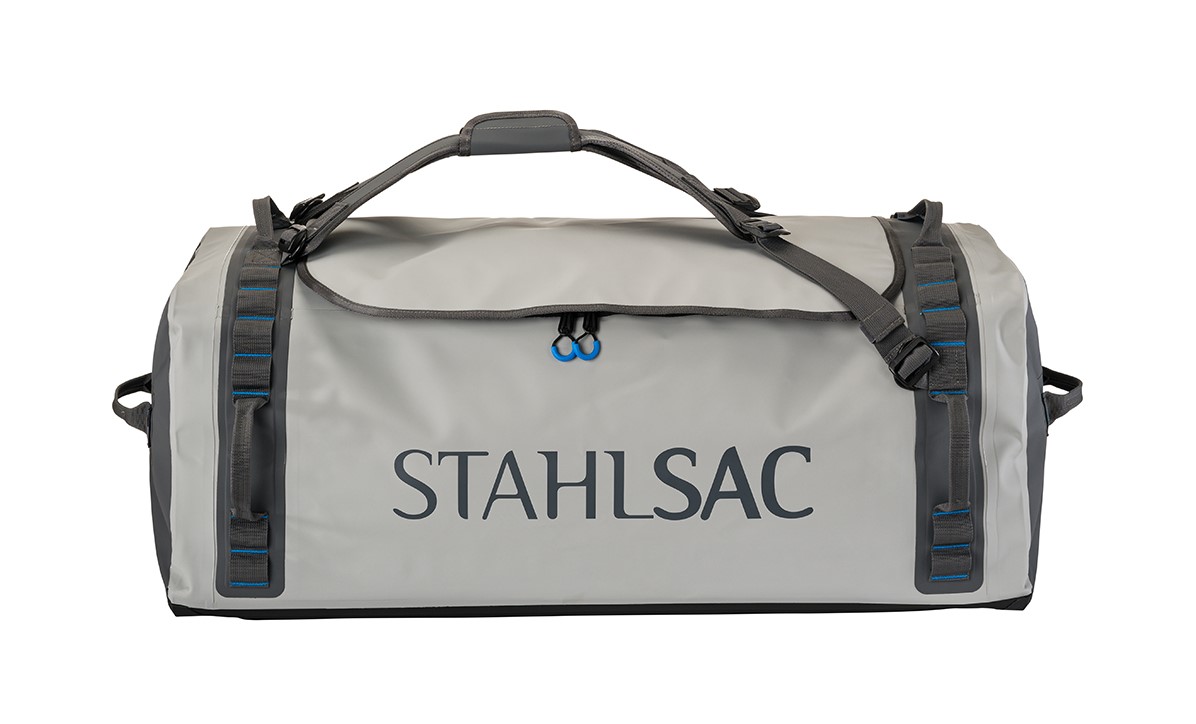
Stahlsac dive bags and travel luggage are built for our community of divers, surfers, kayakers and outdoor explorers who need bags that are constructed with durability, toughness, and 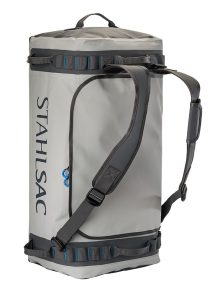 the highest quality the industry has ever seen. We were founded by one man determined to build better watersports and dive bags, and today, that mission is carried on by many. Adventure doesn’t just present itself; it requires discovery. When we design dive bags, we make sure they are tough enough for you to explore in all conditions—warm and cold, wet and dry—to the nearest and farthest reaches of the earth. And for those times you want to push the boundaries of adventure, Stahlsac dive bags make sure you can truly GO ANYWHERE.
the highest quality the industry has ever seen. We were founded by one man determined to build better watersports and dive bags, and today, that mission is carried on by many. Adventure doesn’t just present itself; it requires discovery. When we design dive bags, we make sure they are tough enough for you to explore in all conditions—warm and cold, wet and dry—to the nearest and farthest reaches of the earth. And for those times you want to push the boundaries of adventure, Stahlsac dive bags make sure you can truly GO ANYWHERE.
Abyss Duffels
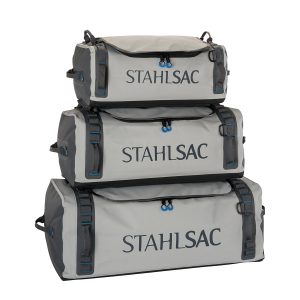 Made to be your partner-in-crime on every adventure, Stahlsac’s Abyss Duffels protects your gear from Mother Nature’s worst. Tough and 100% waterproof with double-TPU nylon material that shrugs off daily wear-and-tear, and RF-welded seams further boost the bag’s potential for lifelong exploring. Get Wet. Get Lost. Go Anywhere with Abyss.
Made to be your partner-in-crime on every adventure, Stahlsac’s Abyss Duffels protects your gear from Mother Nature’s worst. Tough and 100% waterproof with double-TPU nylon material that shrugs off daily wear-and-tear, and RF-welded seams further boost the bag’s potential for lifelong exploring. Get Wet. Get Lost. Go Anywhere with Abyss.
- A weatherproof duffel for trips, travel, and adventure
- Ultra-durable double-TPU nylon protects your gear
- Material repels water and keeps your equipment dry
- RF-welded seams are flush, tough, and waterproof
- Removable straps transform duffel into backpack
- Zippered internal stow compartments carry essentials
- External zippered flap is easy to open and close
- Welded external handles make transporting a breeze
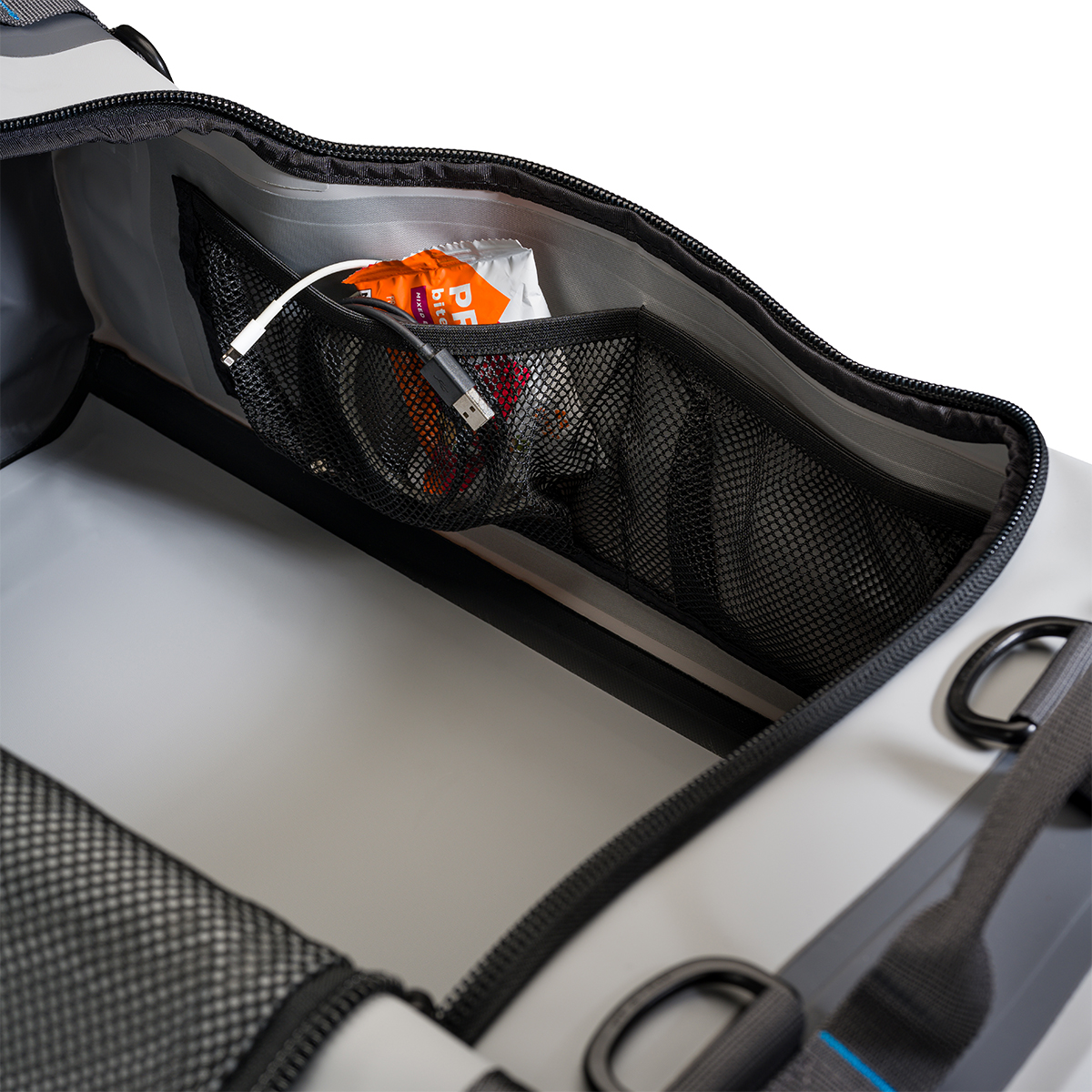
Panama Mesh Backpack
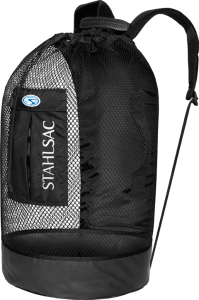 The most copied design in scuba diving, the Stahlsac Panama Mesh Backpack is the “original” design and features two high-density foam padded shoulder straps, extra durable polyester mesh, duffel bag handles and our unique zippered dry pocket inside that combines with a wet pocket outside. The bottom’s built from reinforced 18-gauge PVC nylon to combat the wear and tear of your active coastal lifestyle, and, as a bonus in every bag, we supply a 12″ x 12″ mesh drawstring satchel for extra stowing utility. Pack up your beach kit and go.
The most copied design in scuba diving, the Stahlsac Panama Mesh Backpack is the “original” design and features two high-density foam padded shoulder straps, extra durable polyester mesh, duffel bag handles and our unique zippered dry pocket inside that combines with a wet pocket outside. The bottom’s built from reinforced 18-gauge PVC nylon to combat the wear and tear of your active coastal lifestyle, and, as a bonus in every bag, we supply a 12″ x 12″ mesh drawstring satchel for extra stowing utility. Pack up your beach kit and go.
- Density foam padded shoulder straps
- Outside wet/dry pockets
- 2 Carry handles
- Tough, snag-resistant polyester mesh
- Reinforced PVC bottom
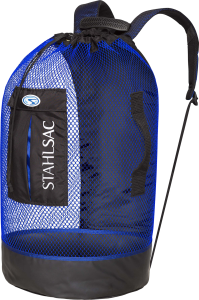
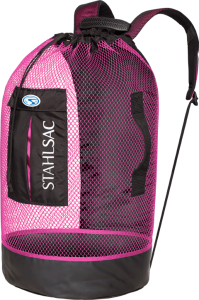
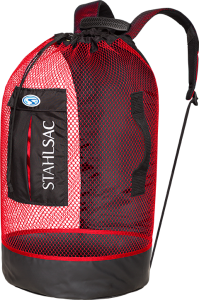
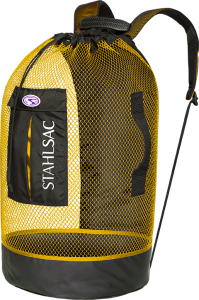
For more information about Stahlsac bags, visit www.stahlsac.com/dive-bags.
Sea & Sea is the home of Stahlsac and other leading diving brands in the UK.
-

 Marine Life & Conservation Blogs3 months ago
Marine Life & Conservation Blogs3 months agoCreature Feature: Swell Sharks
-

 Gear Reviews4 weeks ago
Gear Reviews4 weeks agoGEAR REVIEW – Revolutionising Diving Comfort: The Sharkskin T2 Chillproof Suit
-

 Blogs2 months ago
Blogs2 months agoMurex Resorts: Passport to Paradise!
-

 Blogs3 months ago
Blogs3 months agoDiver Discovering Whale Skeletons Beneath Ice Judged World’s Best Underwater Photograph
-

 News3 months ago
News3 months agoPADI Teams Up with Wellness Brand Neuro to Drive Ocean Change and Create a Blue State of Mind
-

 Gear Reviews3 months ago
Gear Reviews3 months agoGear Review: Oceanic+ Dive Housing for iPhone
-

 Marine Life & Conservation2 months ago
Marine Life & Conservation2 months agoSave the Manatee Club launches brand new webcams at Silver Springs State Park, Florida
-

 Blogs2 months ago
Blogs2 months agoSeagrass Awareness Month brings critical food source for Manatees to centre stage



